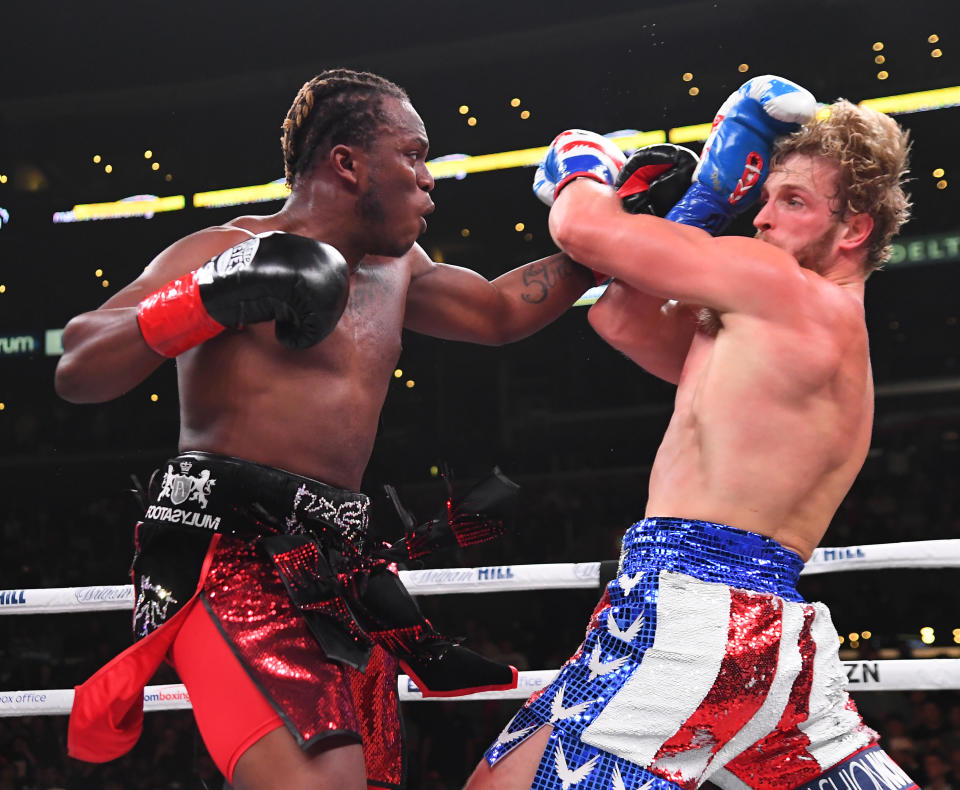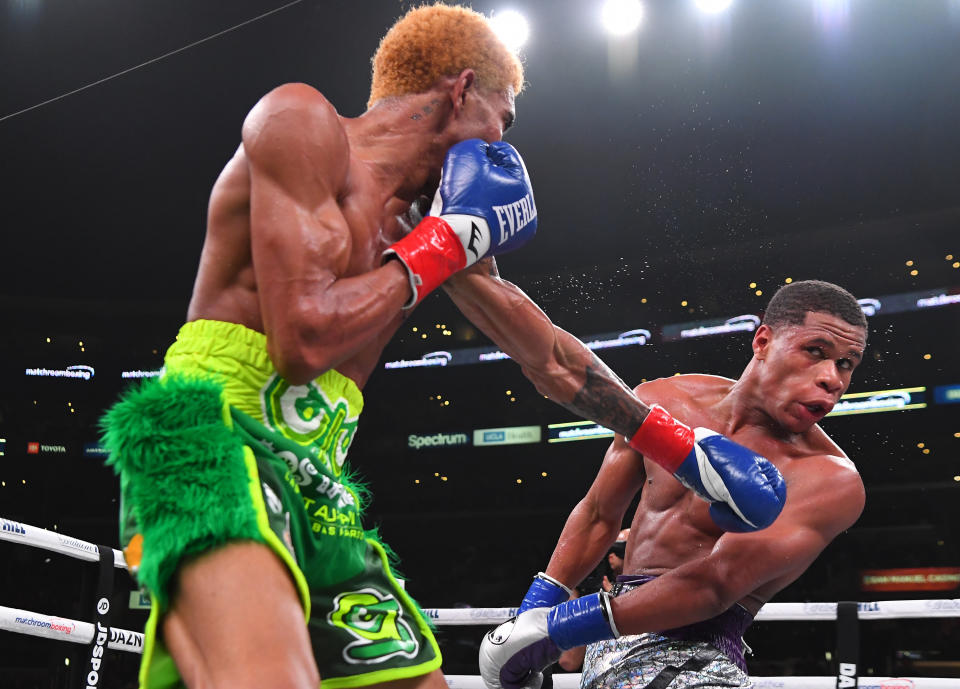Bigger issues face boxing than KSI-Paul bout, which actually taught some good lessons

Ask yourself a question: What is worse for boxing, a pair of YouTube stars who trained very hard and fought each other with all that they had headlining a show at Staples Center, or the spoiled son of a former world champion refusing to take a drug test when requested and having his promoter move the fight to another venue to avoid a suspension?
Nothing dire is going to happen as a result of KSI fighting Logan Paul on Saturday at the Staples Center. The sky isn’t falling, not many long-term fans of the sport are walking away and while neither YouTube star is much of a fighter, every promoter in existence has put on much worse bouts.
But finding a sympathetic commission that will ignore the fact that Julio Cesar Chavez Jr. refused to take a drug test, as requested, by the Nevada Athletic Commission, can have dire consequences for the sport.
God forbid, but say Daniel Jacobs, who is scheduled to fight Chavez on DAZN on Dec. 20 at Talking Stick Resort in Phoenix, gets injured during the bout with Chavez. The long-term repercussions that could arise out of that could be devastating for Matchroom Sport, which is promoting the bout, and for boxing itself.
Chavez Jr. is notoriously unreliable and according to sources, this isn’t the first time in his career he’s missed a drug test.
When fighters die in the ring, as Patrick Day and Maxim Dadashev and Hugo Santillan and Boris Stanchov have done in 2019, we search for answers about how to make the sport safer for its combatants. But when it comes to ridding the sport of performance-enhancing drugs, which boosts an athlete beyond his/her natural capabilities, we shrug and far too often aren’t even outraged when a promoter skips town to skirt a suspension of a fighter who refused to be tested.
What went on Saturday at the Staples Center was criticized heavily, though in the long run it could have a beneficial impact on boxing.
The crowd, announced as 12,137, wasn’t particularly great, but it was hugely enthusiastic. The hope of promoter Eddie Hearn was that by putting these YouTube stars in the ring he’d reach a crowd both in-arena and online watching DAZN’s live stream that was new to boxing and might like what they saw.
That’s unlikely to happen for a number of reasons. When Devin Haney, one of the sport’s bright young stars, was in the ring, much of the attention from the audience was on which celebrities were walking to their seats, not on the struggles Haney had finishing Alfredo Santiago.

DAZN has never released its subscriber numbers, though it’s fair to assume it’s less than the 3.5 million Disney chairman/CEO Bob Iger announced during an earnings call Thursday that ESPN+ has. DAZN will, of course, spin this and say it had unprecedented increases in subscriptions in 3, 2, 1 …
Of course, their words are meaningless without numbers and without context. And even if they added a significant amount, what is more meaningful is how long those people stay with it. DAZN costs either $99.99 for the year or $19.99 per month. I suspect most of the people who subscribed solely to watch KSI and Logan Paul fight — KSI won by split decision in a fight that wasn’t nearly as bad as it might have been — will not renew.
The long-term impact on this will be judged in three months, six months, a year and five years, and whether new fans were created who stay with the sport and support its fighters.
It was a gamble worth taking — more than could be said for sticking by Chavez Jr. — and delivered a message to other promoters:
This is what can happen if you actually market, promote and sell your product. It’s also a message to the fighters, as well. KSI and Paul were paid $900,000 each for the bout, which has to be second only for a pro debut boxer to the roughly $100 million Conor McGregor made in 2017 for facing Floyd Mayweather.
There is a lot of boxing on television and streaming online, and there are many elite young fighters in the world. Much good is happening in the sport, but the lazy, tired narrative that boxing is dead remains a thing, even though there is much evidence to dispel it.
The problem is that the sport is promoted as poorly as it has been in years. Promoters need to create a story surrounding a bout, just like was told during the KSI-Paul buildup and, frankly, like was told during the BMF title fight between Jorge Masvidal and Nate Diaz on Nov. 2 in New York at UFC 244.
Whether or not you like MMA, there is little question that not only does the UFC promote far, far better than any boxing promoter active now, it also makes a much more entertaining in-arena experience for the fans.
Fans — in this case those who follow KSI and Paul on social media — need to have a reason to be interested in a bout. Why are these guys fighting? What is the significance. Yeah, the hardcore fans will watch it all, but those fans represent an eyedropper of water in a pool the size of the Pacific and Atlantic oceans combined.
The fighters need to do more, as well. If they want their sport to grow, to offer bigger purses and get more meaningful coverage and attract real sponsorship money, they have to get out there and sell themselves. That means not only doing interviews, but opening up and telling a story beyond uttering tired boxing cliches.
It means they have to think outside of the box, and understand that while they need to cooperate with the few meaningful boxing-specific websites, there is far more they need to do than that.
Promoters have to avoid being ornery and cranky and complaining about the lack of coverage and what the other guy is doing and pointing out how corrupt the sport is and how much better it was in the old days.
Speak positively about the sport; be transparent; work to fix the problems that exist and highlight talents like Haney and Vergil Ortiz and Teofimo Lopez and Ryan Garcia and Deontay Wilder and Terence Crawford and Naoya Inoue and Jaron Ennis.
KSI and Paul have no future as boxers; not in the traditional sense, at least. Neither of them is ever going to win a legitimate world title or beat a quality opponent. But they came in shape, which is far more than what many expected, and they fought hard. They clearly showed improvement and that they’d taken this fight seriously.
That did all that while selling the hell out of the show.
They proved what is possible. It’s up to the boxers and the promoters to learn the lessons they taught and do the same.
More from Yahoo Sports:

